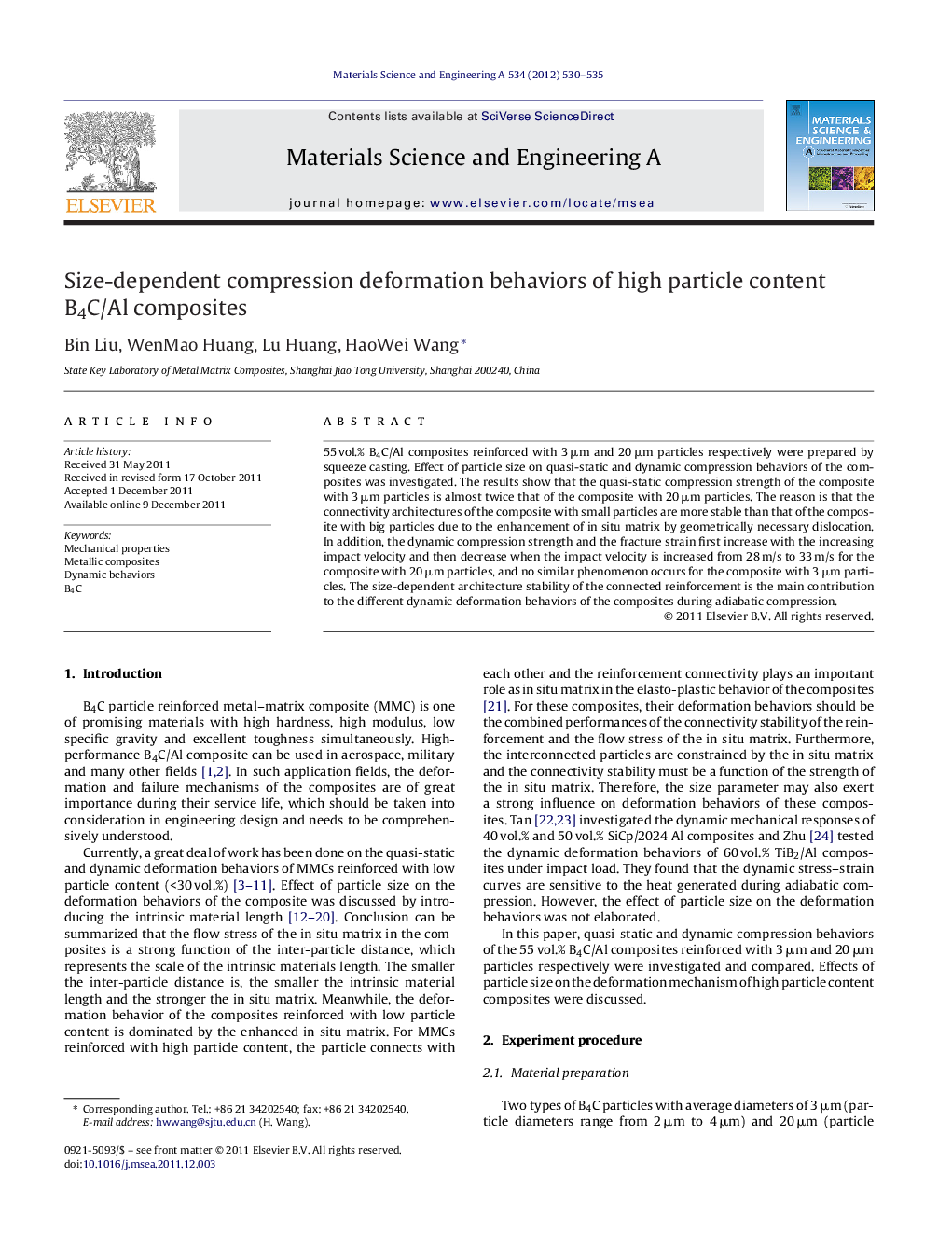| Article ID | Journal | Published Year | Pages | File Type |
|---|---|---|---|---|
| 1577603 | Materials Science and Engineering: A | 2012 | 6 Pages |
55 vol.% B4C/Al composites reinforced with 3 μm and 20 μm particles respectively were prepared by squeeze casting. Effect of particle size on quasi-static and dynamic compression behaviors of the composites was investigated. The results show that the quasi-static compression strength of the composite with 3 μm particles is almost twice that of the composite with 20 μm particles. The reason is that the connectivity architectures of the composite with small particles are more stable than that of the composite with big particles due to the enhancement of in situ matrix by geometrically necessary dislocation. In addition, the dynamic compression strength and the fracture strain first increase with the increasing impact velocity and then decrease when the impact velocity is increased from 28 m/s to 33 m/s for the composite with 20 μm particles, and no similar phenomenon occurs for the composite with 3 μm particles. The size-dependent architecture stability of the connected reinforcement is the main contribution to the different dynamic deformation behaviors of the composites during adiabatic compression.
► Effect of particle size on deformation behaviors is observed for high particle content composites. ► The ceramic network stability is different due to various enhanced in situ matrix. ► The compression strength of the composite with small particles is bigger than that with big particles for different architecture. ► Composite reinforced with small particles is more efficient to resist the soften mechanism.
